
Paris: The Timeless Charm of the City of Light
Discover the timeless charm of Paris, the City of Light, where romance, art, and culinary delights await at every corner.
Paris, the capital of France, is a city that captures the heart of every visitor with its timeless charm and beauty. Known as the 'City of Light', Paris is famous for its romantic ambiance, world-class art, and stunning architecture. From the iconic Eiffel Tower to the historic Notre-Dame Cathedral, there is no shortage of breathtaking landmarks to explore. Stroll along the picturesque streets of Montmartre, where artists like Picasso and Van Gogh once found inspiration. Visit the Louvre, home to thousands of works of art, including the enigmatic Mona Lisa. Enjoy a leisurely boat ride along the Seine River, offering a unique perspective of the city's most famous sights. Paris is also a culinary paradise, offering everything from charming cafes to Michelin-starred restaurants. Indulge in delicious pastries, exquisite wines, and gourmet meals that will tantalize your taste buds. Whether you're shopping in the high-end boutiques of the Champs-Elysées or exploring the vibrant markets, Paris offers a unique blend of old-world elegance and modern sophistication.
Local tips in Paris
- Visit the Eiffel Tower early in the morning or late at night to avoid the crowds and enjoy the best views.
- Purchase a Museum Pass to skip the lines at major attractions like the Louvre and Musée d'Orsay.
- Explore the city on foot or by bike to truly experience the Parisian lifestyle and discover hidden gems.
- Learn a few basic French phrases; locals appreciate the effort and it can enhance your experience.
- Take advantage of the city's excellent public transport system, especially the metro, for easy and affordable travel.
Neighbourhoods in Paris
Paris: The Timeless Charm of the City of Light
Paris, the capital of France, is a city that captures the heart of every visitor with its timeless charm and beauty. Known as the 'City of Light', Paris is famous for its romantic ambiance, world-class art, and stunning architecture. From the iconic Eiffel Tower to the historic Notre-Dame Cathedral, there is no shortage of breathtaking landmarks to explore. Stroll along the picturesque streets of Montmartre, where artists like Picasso and Van Gogh once found inspiration. Visit the Louvre, home to thousands of works of art, including the enigmatic Mona Lisa. Enjoy a leisurely boat ride along the Seine River, offering a unique perspective of the city's most famous sights. Paris is also a culinary paradise, offering everything from charming cafes to Michelin-starred restaurants. Indulge in delicious pastries, exquisite wines, and gourmet meals that will tantalize your taste buds. Whether you're shopping in the high-end boutiques of the Champs-Elysées or exploring the vibrant markets, Paris offers a unique blend of old-world elegance and modern sophistication.
When is the best time to go to Paris?
Iconic landmarks you can’t miss
Eiffel Tower
Experience the Eiffel Tower, a historic landmark and tourist attraction, offering breathtaking views and a taste of Parisian romance.
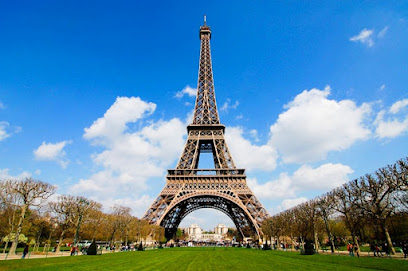
Louvre Museum
Discover the artistic heart of Paris at the Louvre Museum, home to timeless masterpieces and rich cultural heritage.

Arc de Triomphe
Explore the grandeur of the Arc de Triomphe, a monumental symbol of French history and a breathtaking viewpoint in the heart of Paris.

The Basilica of Sacré-Cœur de Montmartre
Explore the stunning Basilica of Sacré-Cœur, an iconic Parisian landmark offering breathtaking views and remarkable art in the heart of Montmartre.
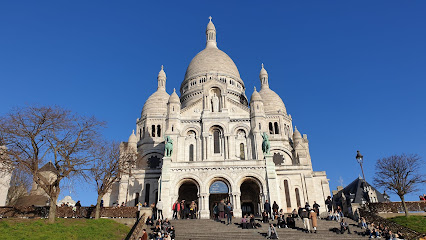
Louvre Pyramid
Discover the stunning Louvre Pyramid, a cultural landmark and gateway to unparalleled art and history in the heart of Paris.

Place de la Concorde
Discover the beauty and history of Place de la Concorde, a stunning landmark in the heart of Paris, surrounded by art, elegance, and rich culture.
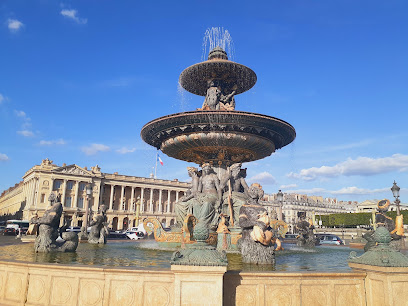
Panthéon
Explore the Panthéon in Paris, an iconic monument blending history, culture, and stunning architecture, honoring the great minds of France.

Cathédrale Notre-Dame de Paris
Explore the iconic Notre-Dame Cathedral, a masterpiece of Gothic architecture and a symbol of Parisian heritage, steeped in history and beauty.
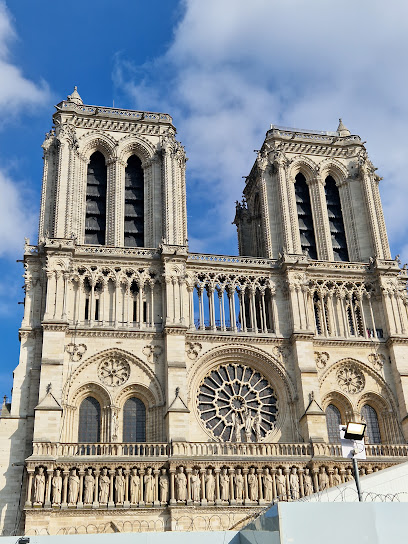
Sainte-Chapelle
Discover the breathtaking beauty of Sainte-Chapelle, a Gothic chapel in Paris known for its stunning stained glass windows and rich historical significance.

Paris Montparnasse – Top of the city
Experience the breathtaking views of Paris from the Montparnasse Observation Deck, the tallest building in the city, perfect for unforgettable memories.
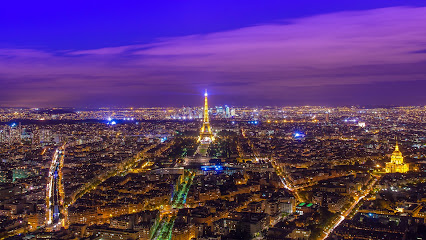
Grand Palais
Explore the Grand Palais, Paris' iconic museum, where art and architecture meet in a breathtaking setting, making it a must-see destination for tourists.

Domaine National du Palais-Royal
Discover the serene beauty and rich history of Domaine National du Palais-Royal, a cultural landmark in the heart of Paris with charming gardens and elegant architecture.

Square Jean XXIII
Explore the serene beauty of Square Jean XXIII, a tranquil park next to Notre-Dame Cathedral, perfect for relaxation and stunning views in Paris.
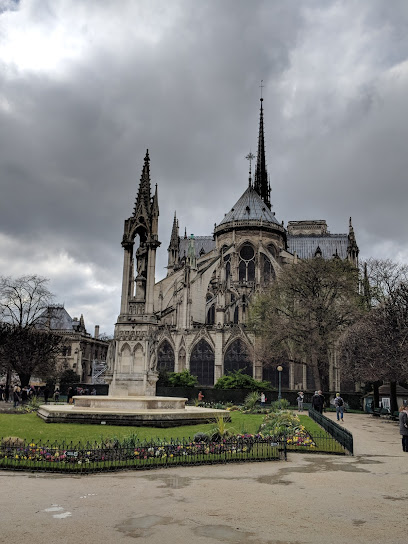
Conciergerie
Explore the Conciergerie in Paris, a historic museum that reveals the fascinating stories of France's royal past and revolutionary history.
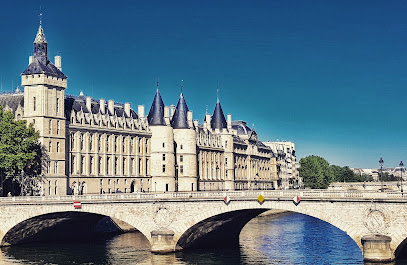
Catacombs of Paris
Explore the Catacombs of Paris, an eerie yet fascinating ossuary and historical site that unveils the city's hidden past beneath its vibrant streets.
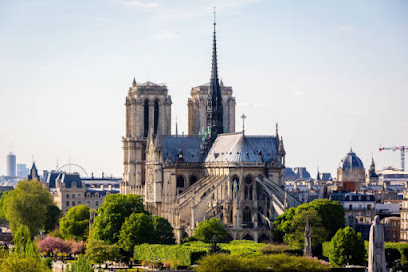
Unmissable attractions to see
Eiffel Tower
Discover the Eiffel Tower, a historic monument in Paris offering breathtaking views, rich history, and unforgettable experiences for every traveler.
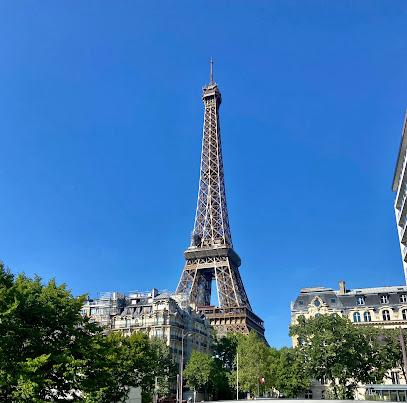
Louvre Museum
Discover the artistic treasures of the Louvre Museum in Paris, home to the Mona Lisa and countless masterpieces that define art history.
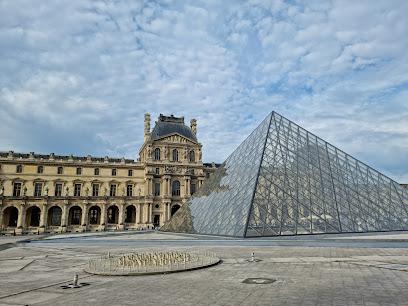
Disneyland Paris
Experience the magic of Disneyland Paris, where fairy tales come to life in the heart of France's enchanting countryside.
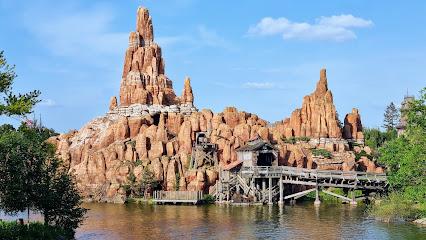
Champ de Mars
Explore the beauty of Champ de Mars in Paris, a stunning park offering breathtaking views of the Eiffel Tower and a perfect spot for relaxation and picnics.
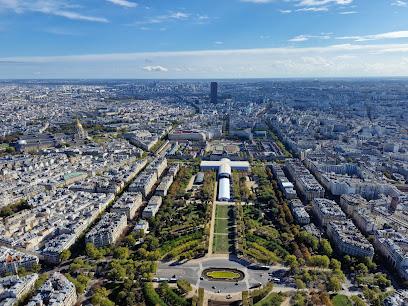
Palace of Versailles
Explore the opulent Palace of Versailles, a UNESCO World Heritage site, showcasing the grandeur and rich history of French royalty.
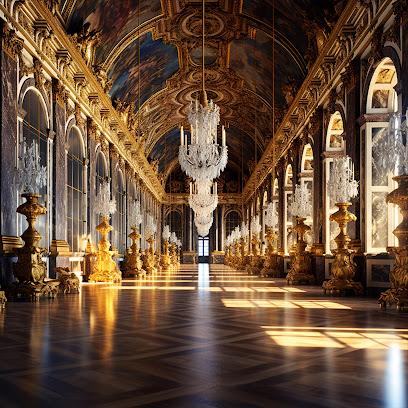
Basilique du Sacré-Cœur de Montmartre
Discover the breathtaking Basilica of the Sacred Heart of Montmartre, a stunning architectural gem with panoramic views of Paris.
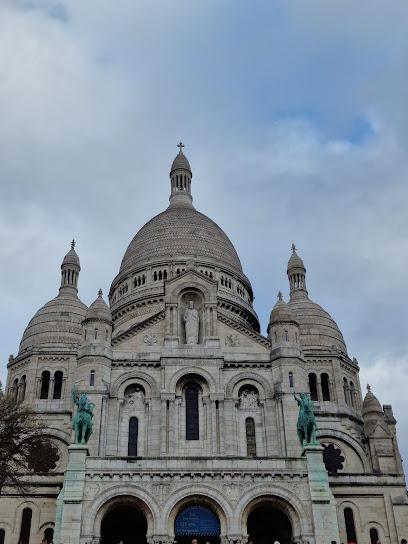
Trocadero gardens
Explore Trocadéro Gardens: A scenic haven in Paris with stunning views of the Eiffel Tower and cultural delights around every corner.
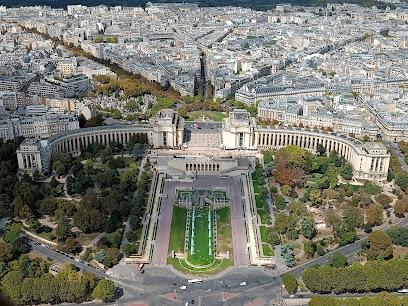
Jardin du Luxembourg
Explore the lush beauty of Jardin du Luxembourg, a historic garden in the heart of Paris, perfect for relaxation and artistic inspiration.
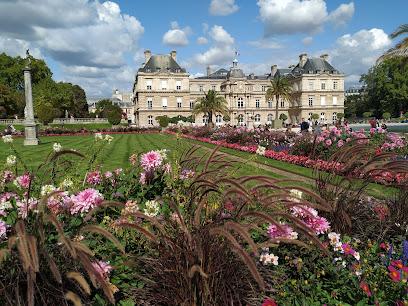
Tuileries Garden
Discover the beauty and tranquility of Tuileries Garden, a historic oasis in the heart of Paris, perfect for relaxation, culture, and picturesque views.
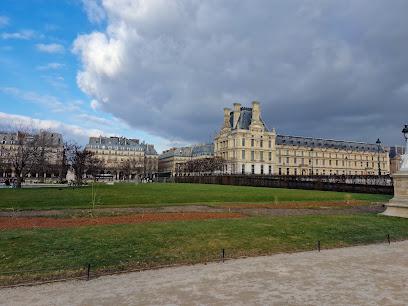
Musée d'Orsay
Explore the artistic legacy of the 19th century at Musée d'Orsay, Paris's premier art museum showcasing masterpieces from Monet to Van Gogh.
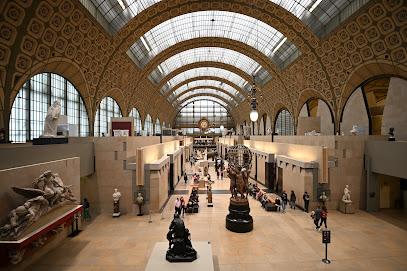
Louvre Pyramid
Discover the majestic Louvre Pyramid, an architectural masterpiece and gateway to the world's largest art museum in the heart of Paris, France.
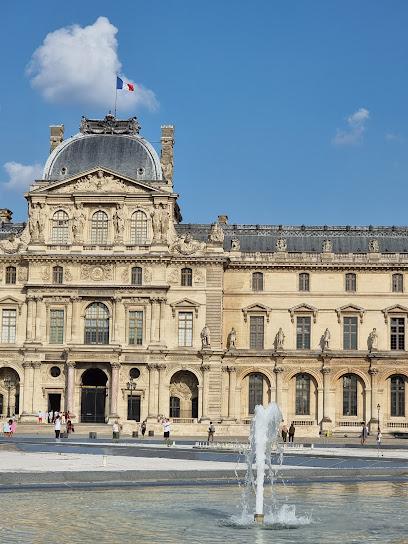
Parc Walt Disney Studios
Discover the enchanting world of cinema at Parc Walt Disney Studios in Chessy, where magical experiences and thrilling attractions await every visitor.
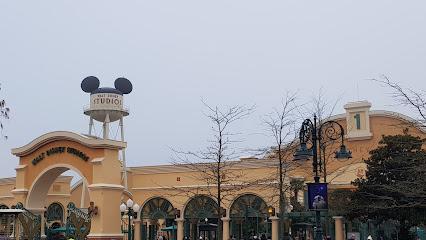
Parc Asterix
Discover the magic of Parc Astérix, where thrilling rides, enchanting shows, and family fun await in a stunning theme park setting.
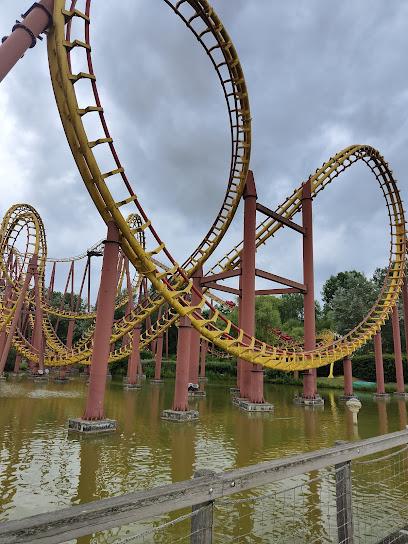
La Villette
Explore La Villette: A cultural haven in Paris with gardens, music venues, and science museums, perfect for a day of fun and relaxation.

Panthéon
Discover the Panthéon: a monumental tribute to France's greatest minds and a stunning example of neoclassical architecture in the heart of Paris.
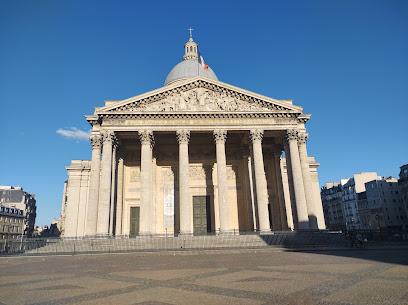
Essential places to dine
Le Ciel de Paris Restaurant
Experience exquisite French cuisine with breathtaking panoramic views at Le Ciel de Paris, one of Paris's most luxurious dining destinations.
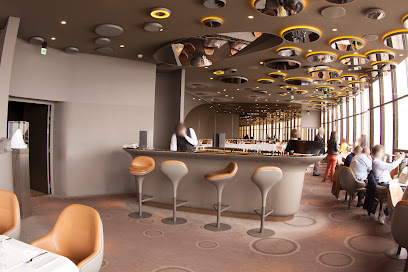
Sphère
Discover Sphère: A modern French restaurant offering exquisite fusion cuisine and traditional delights in the heart of Paris.
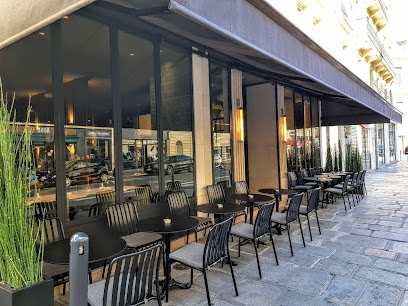
Sacrée Fleur
Experience authentic French cuisine at Sacrée Fleur in Montmartre - where tradition meets innovation in every dish.
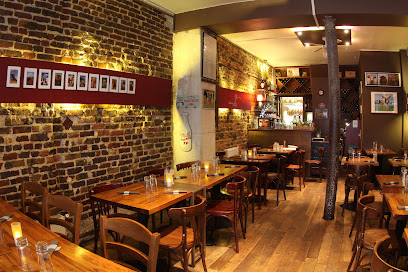
To Restaurant Paris
Discover unparalleled French haute cuisine at To Restaurant Paris—where every dish tells a story and every meal is a celebration.
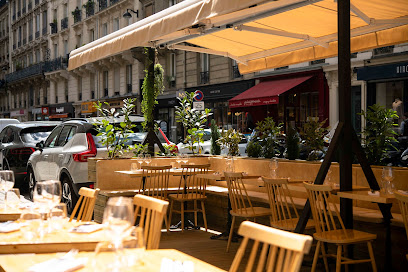
Jules Verne
Experience fine French dining at Jules Verne in the Eiffel Tower, where exquisite cuisine meets breathtaking views over Paris.
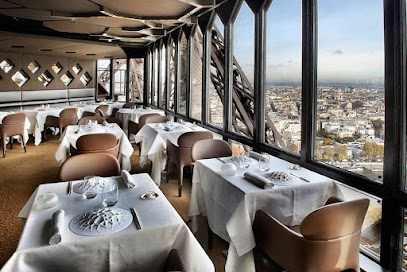
Il était un square
Experience gourmet hamburgers with a French twist at Il était un square - a must-visit dining spot in the heart of Paris.
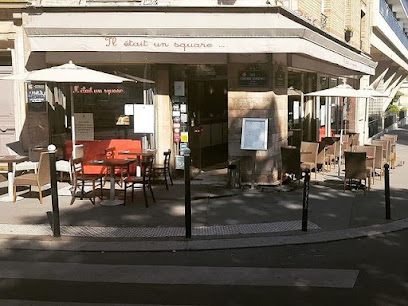
Restaurant Dans le Noir ? Paris
Discover a sensory dining adventure at Restaurant Dans le Noir ?, where exquisite French cuisine meets the thrill of dining in complete darkness.
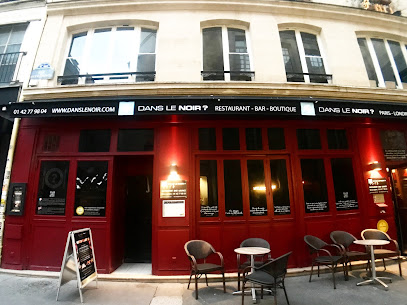
Les Ombres
Experience exquisite French cuisine with breathtaking views of the Eiffel Tower at Les Ombres – where culinary artistry meets stunning scenery.

Le Colimaçon
Experience authentic French cuisine in a cozy setting at Le Colimaçon, where traditional flavors meet modern elegance in the heart of Paris.
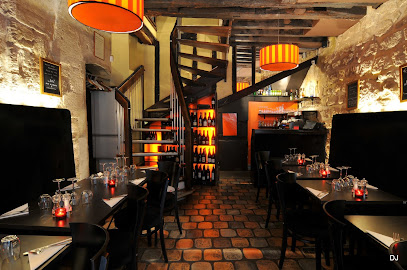
Restaurant Guy Savoy
Discover exquisite French haute cuisine at Restaurant Guy Savoy in Paris – where culinary artistry meets elegant ambiance.
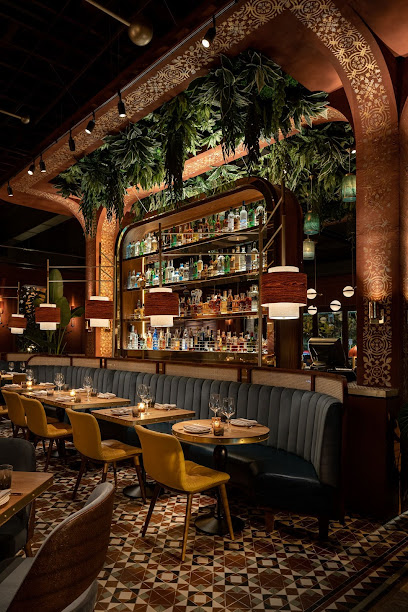
Le Cinq
Experience Michelin-starred dining at Le Cinq in Paris – where exquisite French cuisine meets unparalleled luxury.
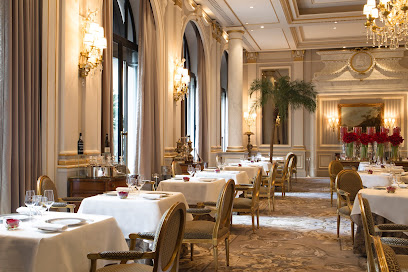
Restaurant L'Ange 20
Experience authentic French cuisine in a cozy setting at Restaurant L'Ange 20, where every dish tells a story.

Epicure
Experience culinary excellence at Epicure, a fine dining restaurant in Paris offering haute French cuisine in a luxurious setting.
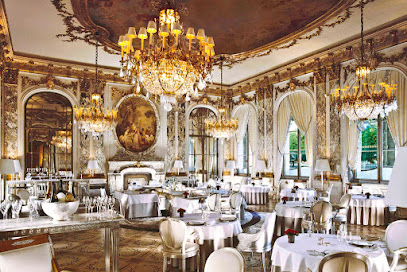
Le Coq & Fils - the Poultry House
Discover Le Coq & Fils in Paris - A charming bistro dedicated to exquisite poultry dishes with a French twist, perfect for food lovers.
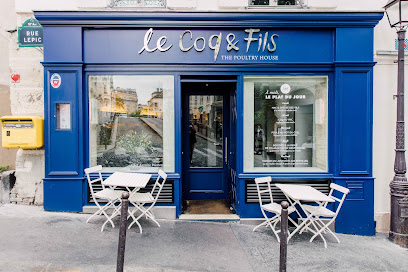
Septime
Experience the art of modern French cuisine at Septime, one of Paris's finest dining destinations known for its innovative dishes and elegant atmosphere.
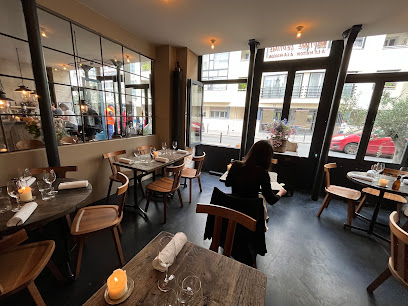
Markets, malls and hidden boutiques
Par’Ici
Explore Par’Ici, the ultimate souvenir shop in Paris, offering unique gifts and fashion accessories that capture the city's charm and elegance.
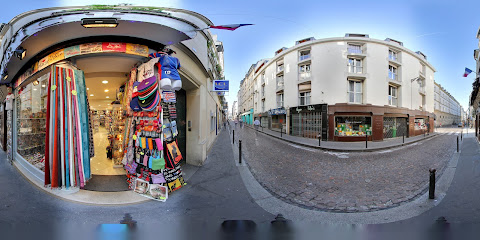
Shop Paris Catacombs
Discover unique gifts and books inspired by the Paris Catacombs at Shop Paris Catacombs, a must-visit destination for tourists seeking memorable souvenirs.
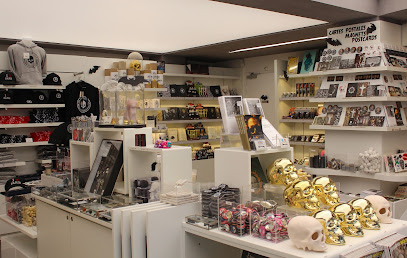
Stranger Things Store : La Boutique Officielle
Discover exclusive Stranger Things merchandise at the official store in Paris, where 80s nostalgia meets modern fandom.
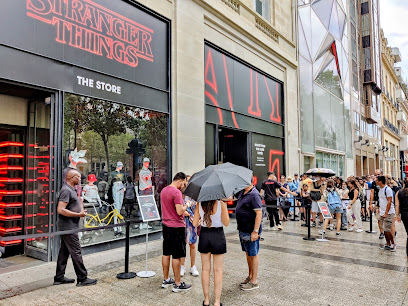
Kiliwatch
Explore Kiliwatch, Paris' premier destination for vintage clothing, offering a unique selection of retro apparel in a charming setting.
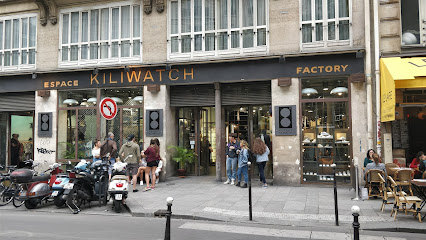
Urban Outfitters
Discover contemporary fashion and vintage vibes at Urban Outfitters in Paris—your ultimate shopping destination for unique styles and home decor.
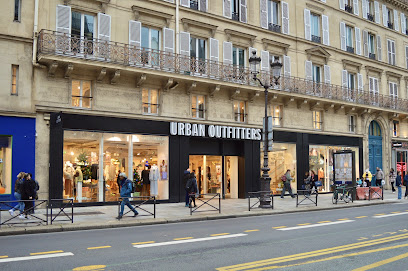
Le Petit Prince
Explore the enchanting gift shop, Le Petit Prince, in Paris, offering unique souvenirs inspired by the beloved classic.
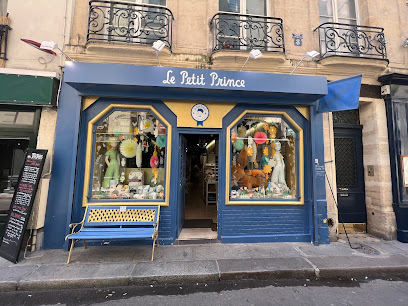
Le Pop Up Parisien
Explore Le Pop Up Parisien for an unforgettable vintage shopping experience in the heart of Paris, featuring unique clothing and stunning costume jewelry.
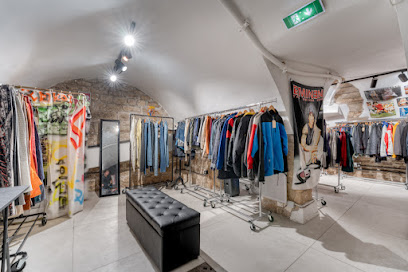
Boutique Maille
Explore the exquisite world of French gourmet flavors at Boutique Maille, the ultimate destination for mustard lovers in Paris.
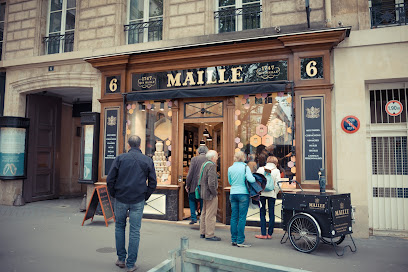
Bonjour Concept Store - Paris
Explore Bonjour Concept Store in Paris for unique gifts and local crafts, capturing the charm of French culture through exquisite ceramics and home goods.
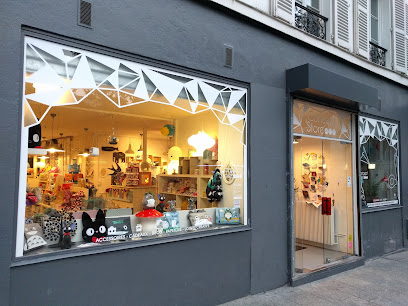
EMPREINTES - The French Craft Concept Store
Explore EMPREINTES, the premier French craft concept store in Paris, featuring authentic handmade artisanal products that tell a story.
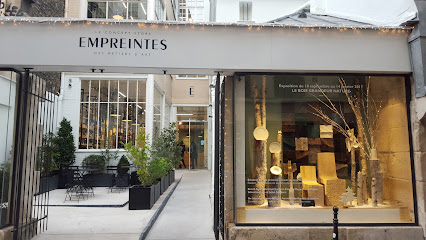
We Are Paris
Discover unique gifts, cosmetics, and handicrafts at We Are Paris, where creativity meets charm in the heart of the city.
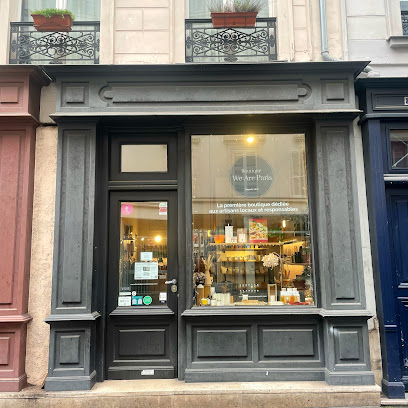
Thanx God I'm a V.I.P.
Uncover unique vintage clothing and accessories in the heart of Paris at Thanx God I'm a V.I.P., where every piece has a story to tell.
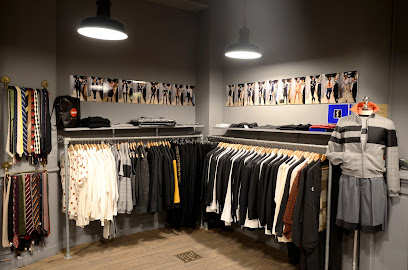
ALE Paris - Luxury Vintage Boutique and Custom Tailoring
Discover timeless elegance at ALE Paris, a luxurious vintage boutique offering custom tailoring and unique fashion treasures in the heart of Paris.
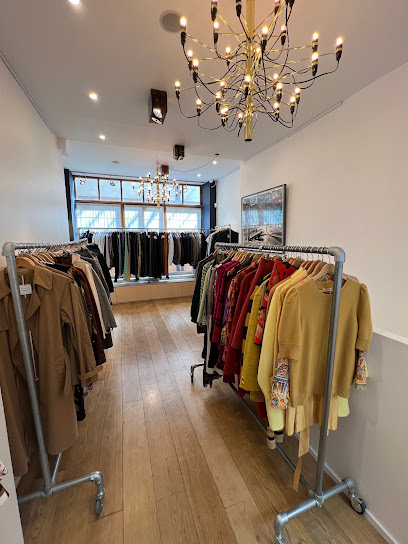
Anne Elisabeth Paris
Explore the finest women's clothing boutique in Paris, featuring chic dresses and stylish fashion accessories for the modern woman.
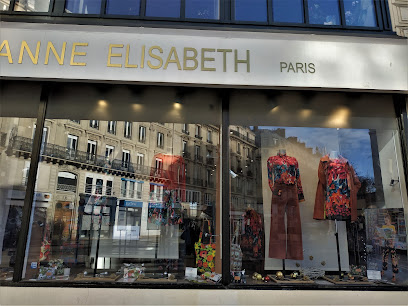
La Boutique des Anges
Explore La Boutique des Anges, a Parisian gift shop offering exquisite gifts and bridal accessories, perfect for every occasion.
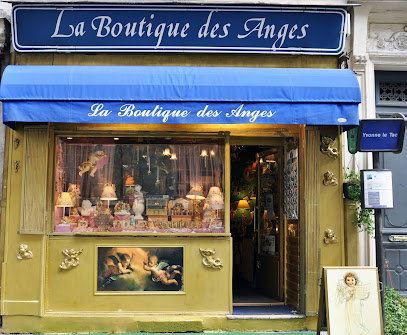
Essential bars & hidden hideouts
Le Dernier Bar avant la Fin du Monde
Discover the whimsical charm and vibrant atmosphere of Le Dernier Bar avant la Fin du Monde, a must-visit bar and restaurant in the heart of Paris.
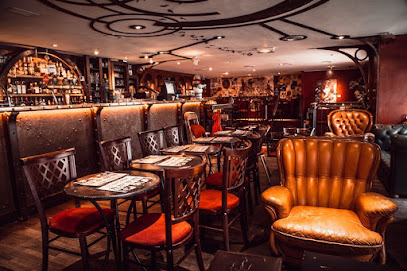
Harry's New York Bar
Harry's New York Bar: A historic cocktail haven in Paris, blending American charm with French flair, renowned for its classic drinks and vibrant ambiance.
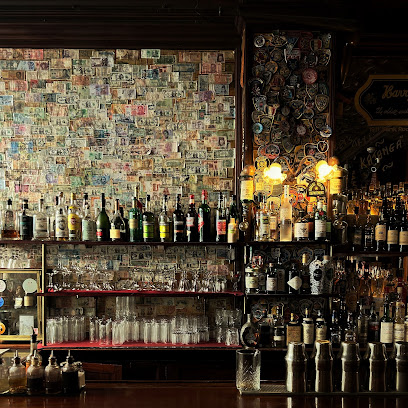
Little Red Door
Discover the Little Red Door, a cocktail bar in Paris where innovative drinks meet an enchanting atmosphere, perfect for nightlife enthusiasts.
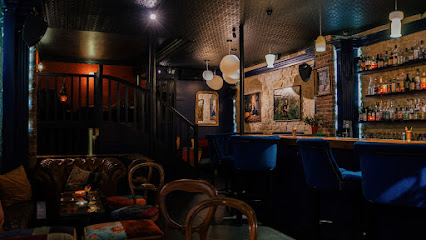
Moonshiner
Discover the hidden charm of Moonshiner, Paris's captivating cocktail bar and Italian restaurant with a speakeasy vibe.
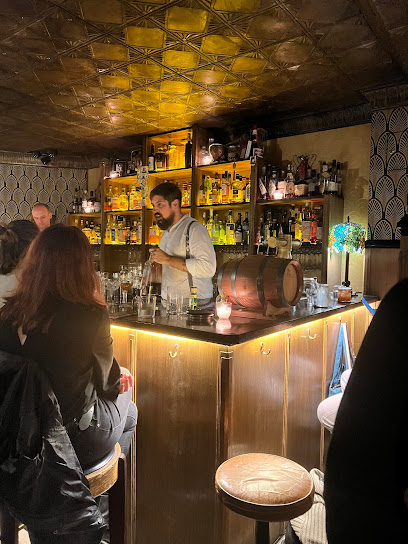
Le N'Importe Quoi
Experience the vibrant nightlife at Le N'Importe Quoi, Paris' eclectic cocktail bar with themed nights and a creative drink menu.
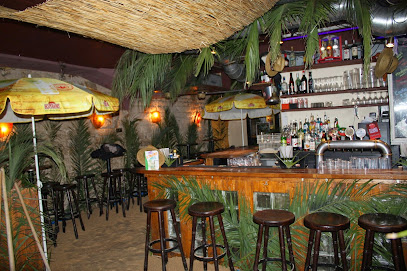
Dirty Dick
Discover Dirty Dick, Paris's eclectic cocktail bar, where creative drinks meet a relaxed ambiance for an unforgettable night out.
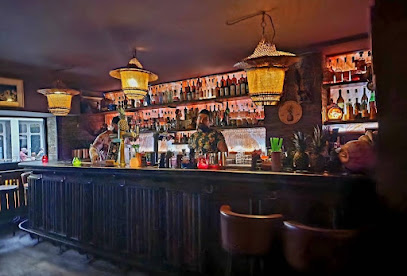
Experimental Cocktail Club
Dive into a world of creative cocktails at the Experimental Cocktail Club, where every drink tells a story in the heart of Paris.
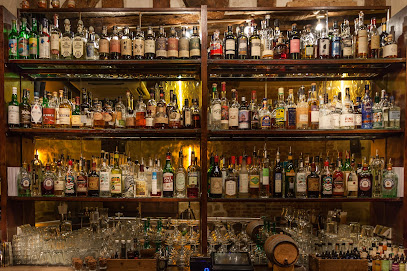
Le Syndicat
Experience the art of mixology at Le Syndicat, Paris' premier cocktail bar where creativity and local flavors collide.
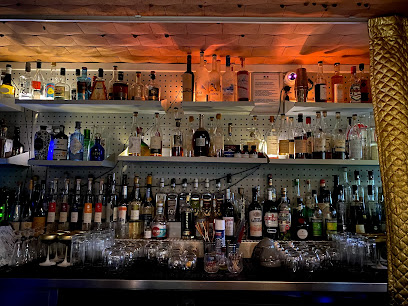
Bisou.
Discover Bisou, a chic cocktail bar in Paris offering personalized drinks and a vibrant atmosphere for an unforgettable nightlife experience.
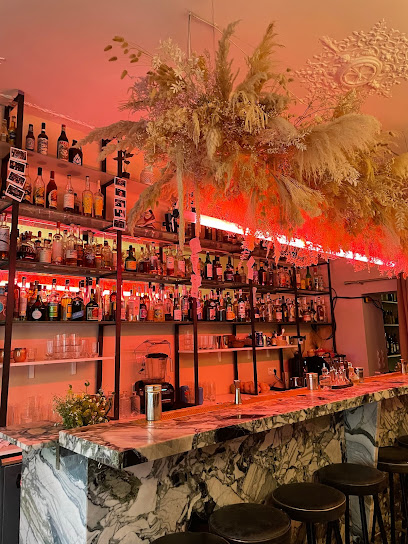
Velvet Bar Paris
Experience the vibrant ambiance and exquisite cocktails at Velvet Bar, a chic cocktail lounge in the heart of Paris, perfect for an unforgettable night out.
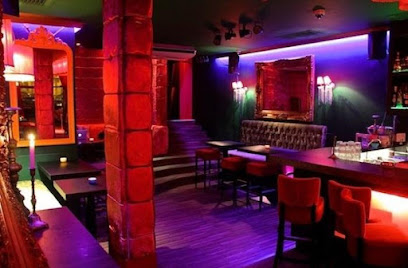
Le Calbar
Experience the vibrant cocktail culture of Paris at Le Calbar, where inventive drinks and a relaxed atmosphere await every visitor.
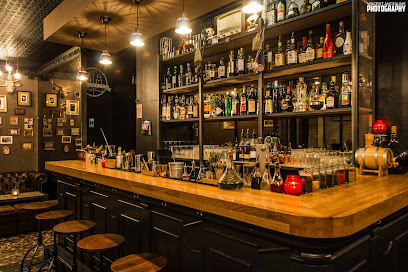
L'Ours Bar
Experience the charm of Paris at L'Ours Bar, where innovative cocktails meet a cozy atmosphere, perfect for unwinding and socializing.
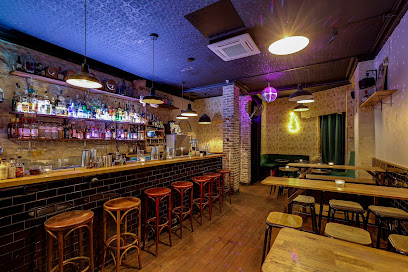
CopperBay
Discover CopperBay, the vibrant cocktail bar in Paris, where expertly crafted drinks meet a lively atmosphere and unforgettable nights.

Prescription Cocktail Club
Discover the innovative cocktails and vibrant atmosphere at Prescription Cocktail Club, a top cocktail bar in the heart of Paris.

Sherry Butt
Experience the vibrant nightlife of Paris at Sherry Butt, a cocktail bar known for its innovative drinks and lively atmosphere.
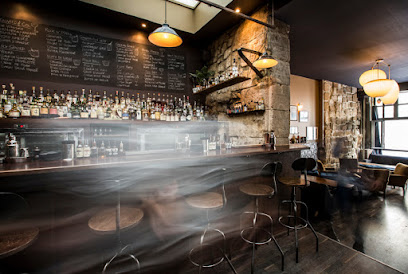
Local Phrases
-
- HelloBonjour
[bohn-zhoor] - GoodbyeAu revoir
[oh ruh-vwahr] - YesOui
[wee] - NoNon
[nohn] - Please/You're welcomeS'il vous plaît/De rien
[seel voo pleh/duh ryen] - Thank youMerci
[mehr-see] - Excuse me/SorryExcusez-moi/Désolé
[ex-kew-zay mwah/dey-zoh-lay] - How are you?Comment ça va?
[koh-mohn sah vah] - Fine. And you?Bien. Et vous?
[byan. ay voo] - Do you speak English?Parlez-vous anglais?
[par-lay voo ahn-glay] - I don't understandJe ne comprends pas
[zhuh nuh kohm-prahnd pah]
- HelloBonjour
-
- I'd like to see the menu, pleaseJe voudrais voir la carte, s'il vous plaît
[zhuh voo-dray vwahr lah kart, seel voo pleh] - I don't eat meatJe ne mange pas de viande
[zhuh nuh mahnj pah duh vee-ahnd] - Cheers!Santé!
[sahn-tay] - I would like to pay, pleaseJe voudrais payer, s'il vous plaît
[zhuh voo-dray pay-ay, seel voo pleh]
- I'd like to see the menu, pleaseJe voudrais voir la carte, s'il vous plaît
-
- Help!Au secours!
[oh suh-koor] - Go away!Allez-vous en!
[ah-lay vooz ahn] - Call the Police!Appelez la police!
[ah-pay-lay lah poh-leece] - Call a doctor!Appelez un médecin!
[ah-pay-lay uh may-duh-sahn] - I'm lostJe suis perdu
[zhuh swee pair-doo] - I'm illJe suis malade
[zhuh swee mah-lahd]
- Help!Au secours!
-
- I'd like to buy...Je voudrais acheter...
[zhuh voo-dray ah-shuh-tay] - I'm just lookingJe regarde juste
[zhuh ruh-gahrd zhust] - How much is it?Combien ça coûte?
[kohm-byen sah koot] - That's too expensiveC'est trop cher
[say troh sher] - Can you lower the price?Pouvez-vous baisser le prix?
[poo-vay voo bay-say luh pree]
- I'd like to buy...Je voudrais acheter...
-
- What time is it?Quelle heure est-il?
[kel uhr ay-teel] - It's one o'clockIl est une heure
[eel ay tun uhr] - Half past (10)Dix heures et demie
[dees uhr ay duh-mee] - MorningMatin
[mah-tan] - AfternoonAprès-midi
[ah-pray mee-dee] - EveningSoir
[swahr] - YesterdayHier
[ee-air] - TodayAujourd'hui
[oh-zhoor-dwee] - TomorrowDemain
[duh-mahn] - 1Un
[uh] - 2Deux
[duh] - 3Trois
[trwah] - 4Quatre
[kah-truh] - 5Cinq
[sank] - 6Six
[sees] - 7Sept
[set] - 8Huit
[wheat] - 9Neuf
[nuff] - 10Dix
[dees]
- What time is it?Quelle heure est-il?
-
- Where's a/the...?Où est...?
[oo ay] - What's the address?Quelle est l'adresse?
[kel ay lah-dress] - Can you show me (on the map)?Pouvez-vous me montrer (sur la carte)?
[poo-vay voo muh mohn-tray (soor lah kart)] - When's the next (bus)?Quand est le prochain (bus)?
[kahn ay luh proh-shahn (boos)] - A ticket (to ....)Un billet (pour ....)
[uhn bee-yay (poor)]
- Where's a/the...?Où est...?
History of Paris
-
Paris, originally a settlement known as Lutetia, was founded by the Parisii, a Celtic tribe, around the 3rd century BC. The strategic location on the Ile de la Cité in the Seine River made it an important center of trade and commerce long before it became the capital of France.
-
In 52 BC, Lutetia was conquered by the Romans and renamed Lutetia Parisiorum. Under Roman rule, the city expanded significantly and featured typical Roman amenities such as baths, temples, and an amphitheater. The Roman influence is still visible today in remnants like the Arènes de Lutèce and the Thermes de Cluny.
-
Paris experienced significant growth during the Middle Ages, especially after Hugh Capet established the Capetian dynasty in 987 AD. The construction of Notre-Dame Cathedral began in 1163, symbolizing Paris's importance as a religious and cultural center. The University of Paris, founded in 1150, became one of the most prestigious educational institutions in Europe.
-
During the Hundred Years' War (1337-1453), Paris was a focal point of conflict between France and England. The city was occupied by the English from 1420 to 1436. The war significantly impacted the city's demographics and infrastructure, but it also led to the strengthening of French national identity.
-
The Renaissance brought a cultural rebirth to Paris under the reign of King François I (1515-1547). He invited artists, architects, and scholars from Italy, leading to the construction of new buildings like the Louvre Palace. This period marked the beginning of Paris as a center of art and culture.
-
Paris was the epicenter of the French Revolution, which began in 1789. Key events such as the storming of the Bastille on July 14, 1789, and the Reign of Terror took place in the city. The Revolution brought about significant political, social, and cultural changes, including the establishment of the First French Republic.
-
Under Napoleon Bonaparte, Paris underwent extensive urban renewal. The Arc de Triomphe, commissioned by Napoleon in 1806, remains one of the most iconic landmarks. The 19th century also saw the Haussmann renovation of Paris, which transformed the medieval city into a modern metropolis with wide boulevards, parks, and uniform building facades.
-
The Belle Époque (1871-1914) was a period of cultural flourishing and economic prosperity in Paris. The city became a hub for artistic innovation with the emergence of Impressionist and Post-Impressionist movements. Landmarks like the Eiffel Tower, constructed for the 1889 Exposition Universelle, and the Paris Métro, inaugurated in 1900, date from this era.
-
During World War II, Paris was occupied by Nazi Germany from June 1940 to August 1944. The city endured hardship and resistance efforts, culminating in the Liberation of Paris in August 1944. The occupation period left a lasting impact on Parisian society and culture.
-
In the post-war period, Paris regained its status as a global center of art, fashion, and intellectual thought. The city has continued to evolve with modern architectural projects like the Centre Pompidou and the La Défense business district. Paris remains a vibrant, multicultural metropolis, rich in history and culture.
Paris Essentials
-
Paris is accessible through multiple international airports, with Charles de Gaulle Airport (CDG) being the main hub. Other options include Orly Airport (ORY) and Beauvais-Tillé Airport (BVA). From the airports, you can take a taxi, shuttle bus, or public transport to the city center. The city is also well-connected by high-speed trains (TGV) from major European cities and has an extensive road network for those driving.
-
Paris boasts an efficient public transportation system, including the Metro, buses, and trams. The Metro is the fastest way to get around the city. Buses offer scenic routes, while trams connect the outer districts. Taxis and rideshare services like Uber are also available. For a more leisurely experience, consider renting a bike or using the city's electric scooter services. Walking is another excellent way to explore the city's neighborhoods.
-
The official currency in Paris is the Euro (EUR). Credit and debit cards are widely accepted, but it's always good to have some cash for smaller establishments and markets. ATMs are plentiful throughout the city. Contactless payment methods like Apple Pay and Google Wallet are also increasingly accepted.
-
Paris is generally safe for tourists, but it's wise to stay vigilant. Be cautious in crowded areas like metros, tourist attractions, and markets, as pickpocketing can occur. Areas such as Gare du Nord and Châtelet-Les Halles are known for higher crime rates targeting tourists. Avoid poorly lit or deserted areas at night. Always keep your belongings secure and be aware of your surroundings.
-
In case of emergency, dial 112 for all types of emergencies. The police can be reached at 17, fire services at 18, and medical emergencies at 15. Most hospitals and clinics have English-speaking staff. Pharmacies are plentiful and often open late. It's advisable to have travel insurance that covers medical emergencies and to carry a list of important contacts.
-
Fashion: Do dress stylishly; Parisians value fashion. Avoid overly casual attire like flip-flops or athletic wear unless you're at the gym. Religion: Do respect religious sites by dressing modestly and keeping noise levels down. Public Transport: Do stand on the right side of escalators and let people off the Metro before boarding. Don't eat or drink on public transport. Greetings: Do greet people with a polite 'Bonjour' (hello) and 'Merci' (thank you). A light kiss on both cheeks (bise) is a common greeting among friends. Eating & Drinking: Do take your time to enjoy meals and savor the experience. Don't expect to rush through a meal, as dining is a leisurely activity in Paris.
-
To experience Paris like a local, visit neighborhood markets such as Marché d'Aligre or Marché des Enfants Rouges for fresh produce and local delicacies. Enjoy a picnic in one of the city's beautiful parks like Jardin du Luxembourg or Parc des Buttes-Chaumont. Take a leisurely stroll along the Seine or explore lesser-known districts like Canal Saint-Martin. Engage with Parisians in French, even if it's just a few words; they'll appreciate the effort.
Trending Landmark in Paris
-
Eiffel Tower
-
Louvre Museum
-
Arc de Triomphe
-
The Basilica of Sacré-Cœur de Montmartre
-
Louvre Pyramid
-
Place de la Concorde
-
Panthéon
-
Cathédrale Notre-Dame de Paris
-
Sainte-Chapelle
-
Paris Montparnasse – Top of the city
-
Grand Palais
-
Domaine National du Palais-Royal
-
Square Jean XXIII
-
Conciergerie
-
Catacombs of Paris
Nearby Cities to Paris
-
Things To Do in Versailles
-
Things To Do in Rouen
-
Things To Do in Amiens
-
Things To Do in Reims
-
Things To Do in Caen
-
Things To Do in Lille
-
Things To Do in Tours
-
Things To Do in Tournai
-
Things To Do in Mons
-
Things To Do in Ypres
-
Things To Do in Kortrijk
-
Things To Do in Dinant
-
Things To Do in Namur
-
Things To Do in Nieuwpoort
-
Things To Do in Louvain-la-Neuve



















